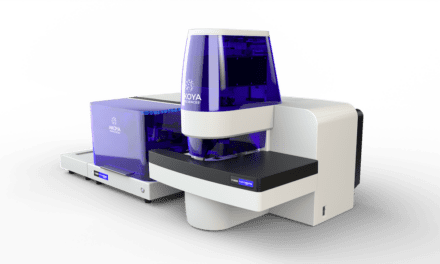 The Olympus MacroView MVX10 macro zoom microscope combines maximum detection sensitivity at the lowest magnifications with a high-magnification zoom for imaging fluorescence specimens at the cellular level. The first instrument of its kind available to researchers, it combines the best features of compound and stereomicroscopes, allowing zoom macro- to micro-level fluorescence imaging of the same specimen. The MVX10 offers large working distances and fields of view, similar to stereomicroscopes, making it well-suited for visualizing whole organisms and large tissue slices. It also provides high-NA objectives for enhanced resolution and light-gathering ability; it is optimized to handle low-light fluorescence for imaging cellular features. The MVX can be used with any of three parfocal, high-NA objectives. The 0.63x/0.15NA objective provides a field of view that ranges up to 55 mm. The 1x/0.25NA sets a record among life-science zoom microscopes for both working distance (65 mm) and light gathering ability for objectives of its magnification. The 2x/0.5NA objective has a correction collar for adjusting to aqueous media with a depth of up to 5 mm above the specimen. All three objectives are plan apochromatic, producing the highest image quality with superior chromatic aberration correction. They offer exceptional transmission and high signal-to-noise ratios, so that living samples have shorter exposure to phototoxic light. When compared to many high-end stereo microscopes, the objectives can deliver up to 10 times the light intensity that is emitted from a fluorescing specimen to the image-capture device. The optics also provide excellent performance through the near-IR range, making the MVX10 versatile enough to address a wide variety of live cell applications. Unlike standard stereo microscopes with two optical paths, the MVX10 is a mono-zoom microscope, which uses a single, large-diameter optical path to collect the weak light generated by fluorescence at all magnifications. This optical path, with specially designed lenses, provides exceptionally high NAs, enabling increased brightness and resolution, while retaining the working distance and wide field of view of stereomicroscopes. It also ensures easy observation of dynamic processes over time.
The Olympus MacroView MVX10 macro zoom microscope combines maximum detection sensitivity at the lowest magnifications with a high-magnification zoom for imaging fluorescence specimens at the cellular level. The first instrument of its kind available to researchers, it combines the best features of compound and stereomicroscopes, allowing zoom macro- to micro-level fluorescence imaging of the same specimen. The MVX10 offers large working distances and fields of view, similar to stereomicroscopes, making it well-suited for visualizing whole organisms and large tissue slices. It also provides high-NA objectives for enhanced resolution and light-gathering ability; it is optimized to handle low-light fluorescence for imaging cellular features. The MVX can be used with any of three parfocal, high-NA objectives. The 0.63x/0.15NA objective provides a field of view that ranges up to 55 mm. The 1x/0.25NA sets a record among life-science zoom microscopes for both working distance (65 mm) and light gathering ability for objectives of its magnification. The 2x/0.5NA objective has a correction collar for adjusting to aqueous media with a depth of up to 5 mm above the specimen. All three objectives are plan apochromatic, producing the highest image quality with superior chromatic aberration correction. They offer exceptional transmission and high signal-to-noise ratios, so that living samples have shorter exposure to phototoxic light. When compared to many high-end stereo microscopes, the objectives can deliver up to 10 times the light intensity that is emitted from a fluorescing specimen to the image-capture device. The optics also provide excellent performance through the near-IR range, making the MVX10 versatile enough to address a wide variety of live cell applications. Unlike standard stereo microscopes with two optical paths, the MVX10 is a mono-zoom microscope, which uses a single, large-diameter optical path to collect the weak light generated by fluorescence at all magnifications. This optical path, with specially designed lenses, provides exceptionally high NAs, enabling increased brightness and resolution, while retaining the working distance and wide field of view of stereomicroscopes. It also ensures easy observation of dynamic processes over time.
Olympus America Inc
(800) 446-5967; www.olympusamerica.com/microscopes




